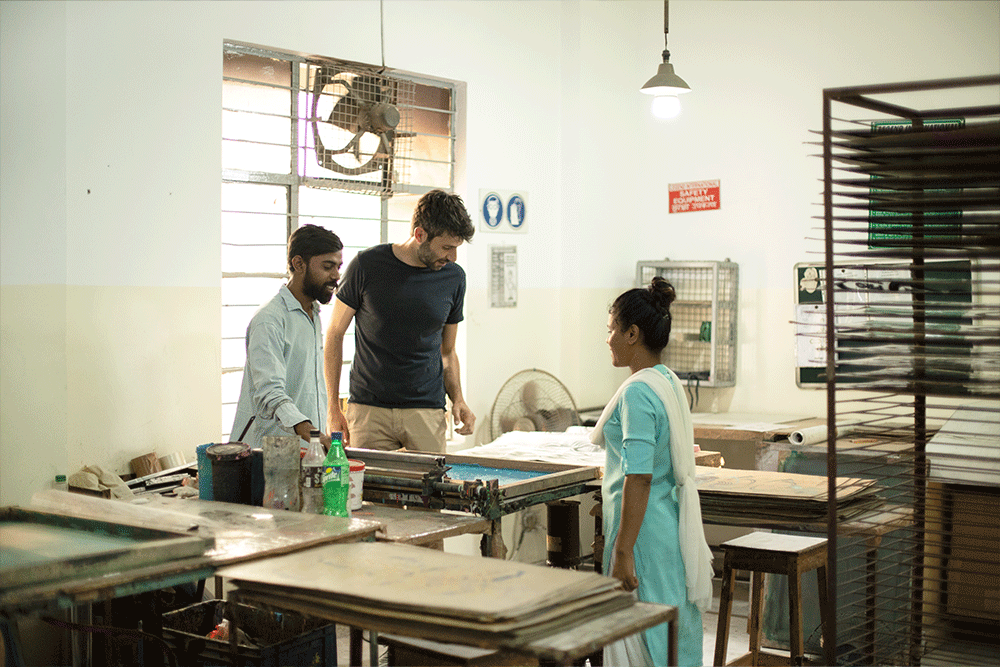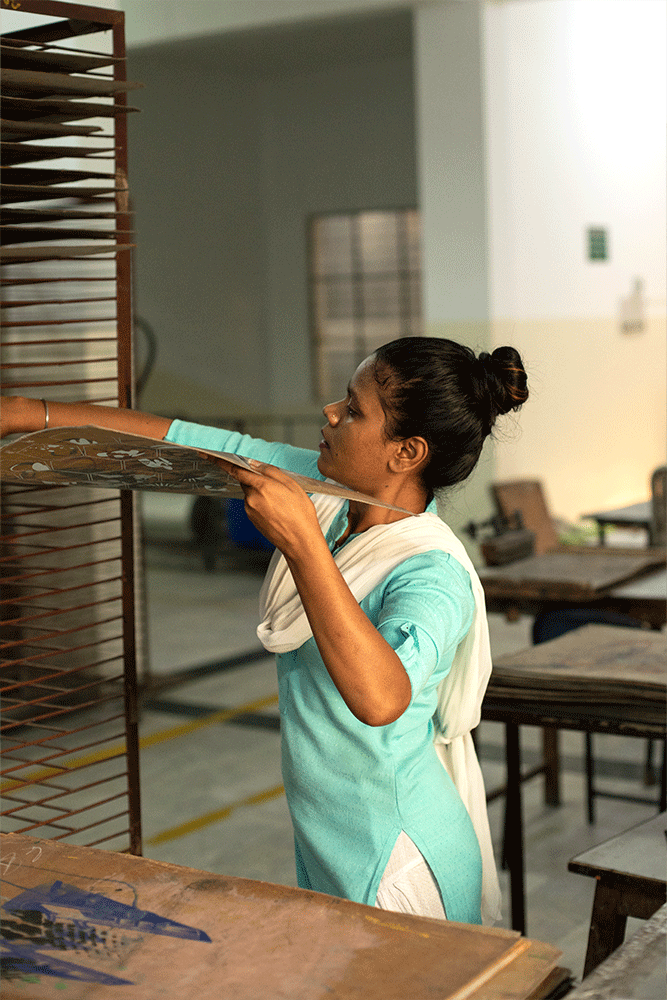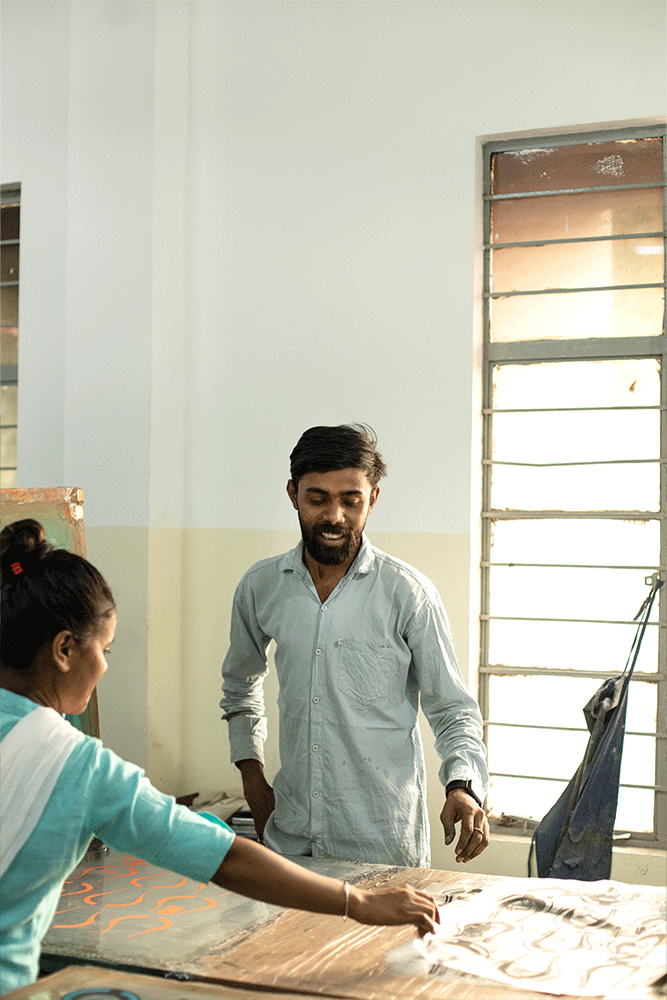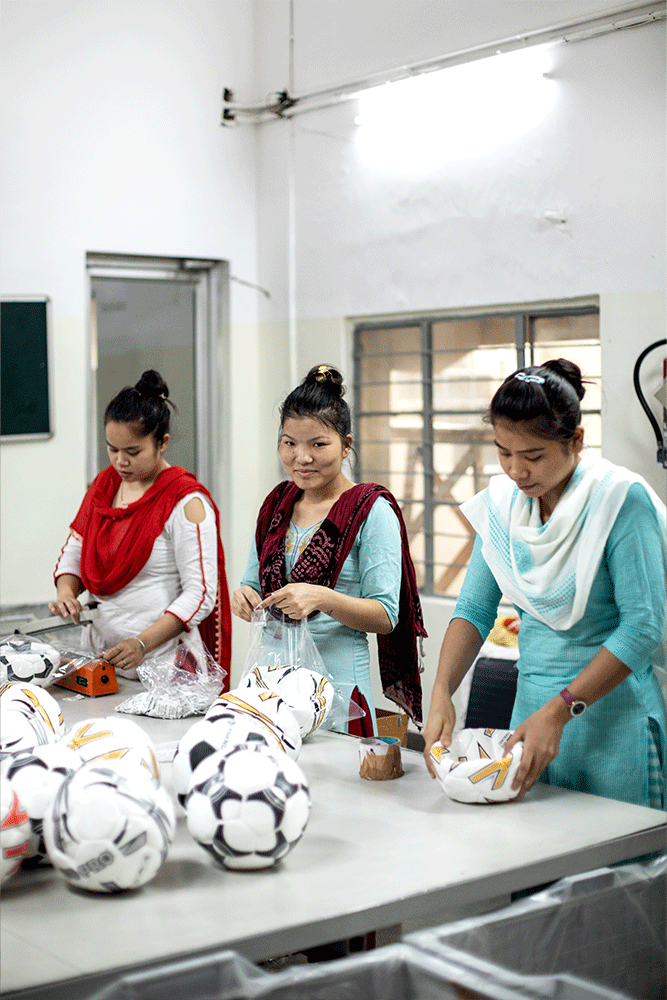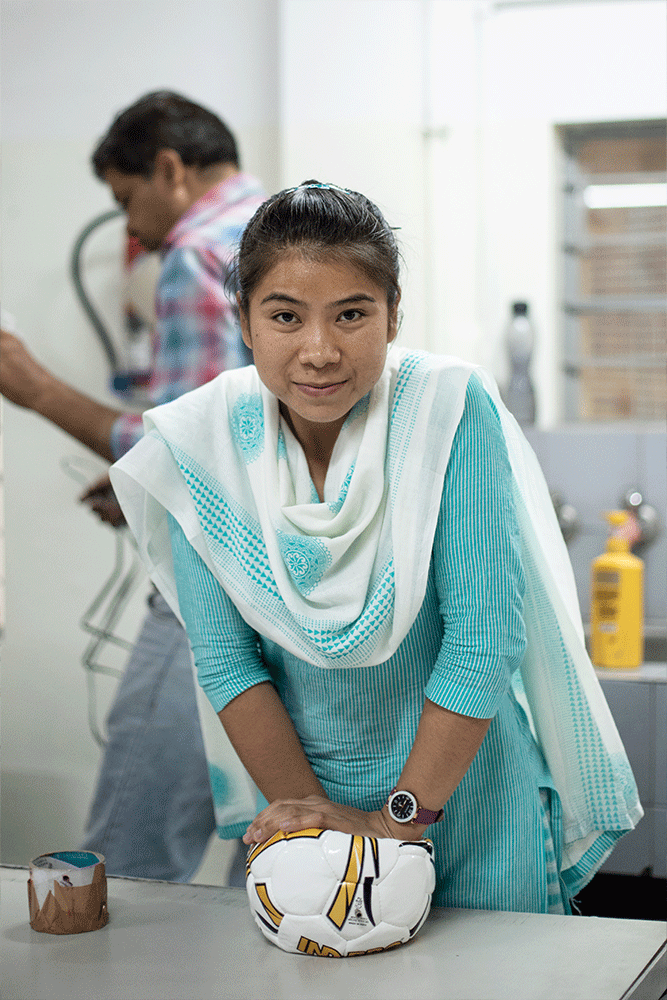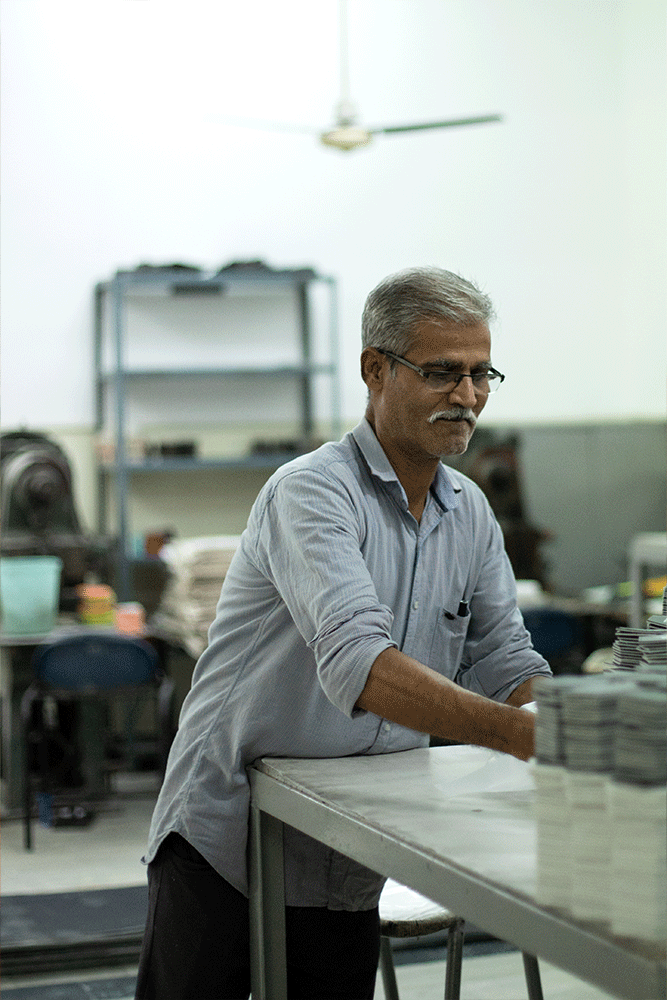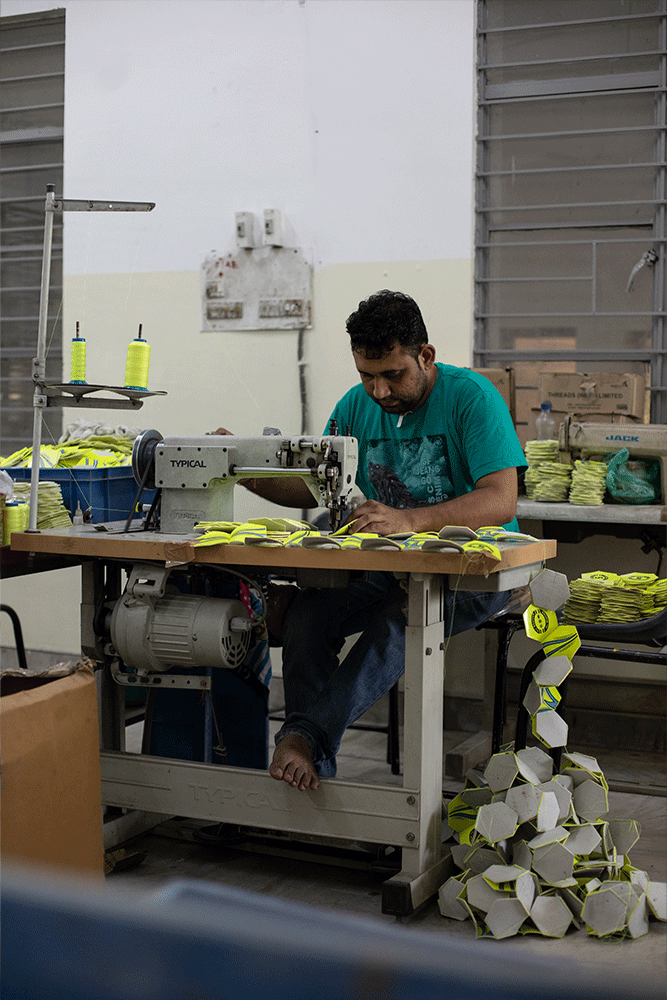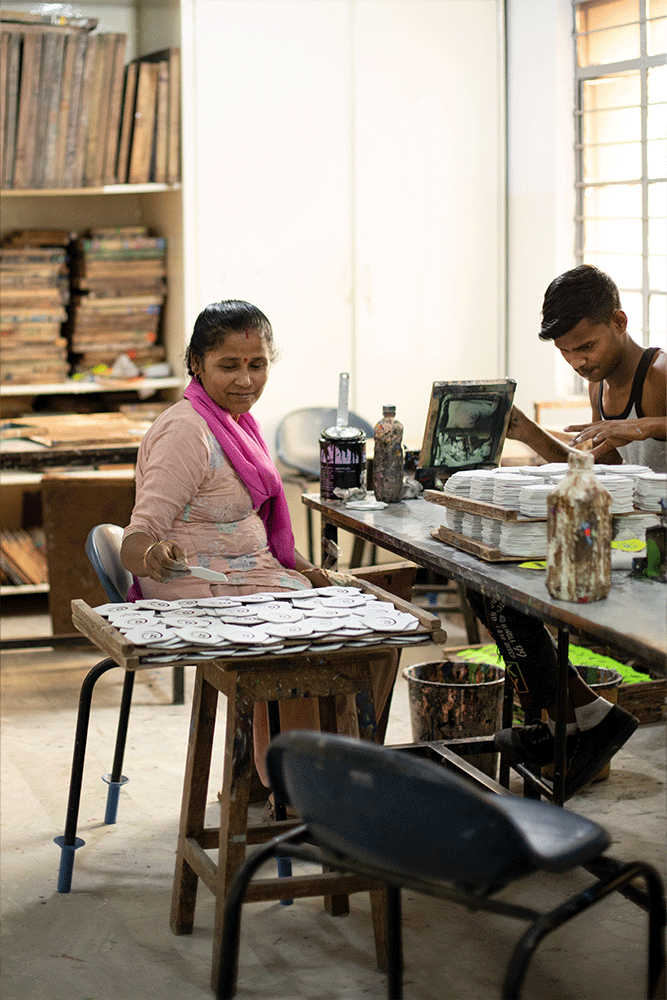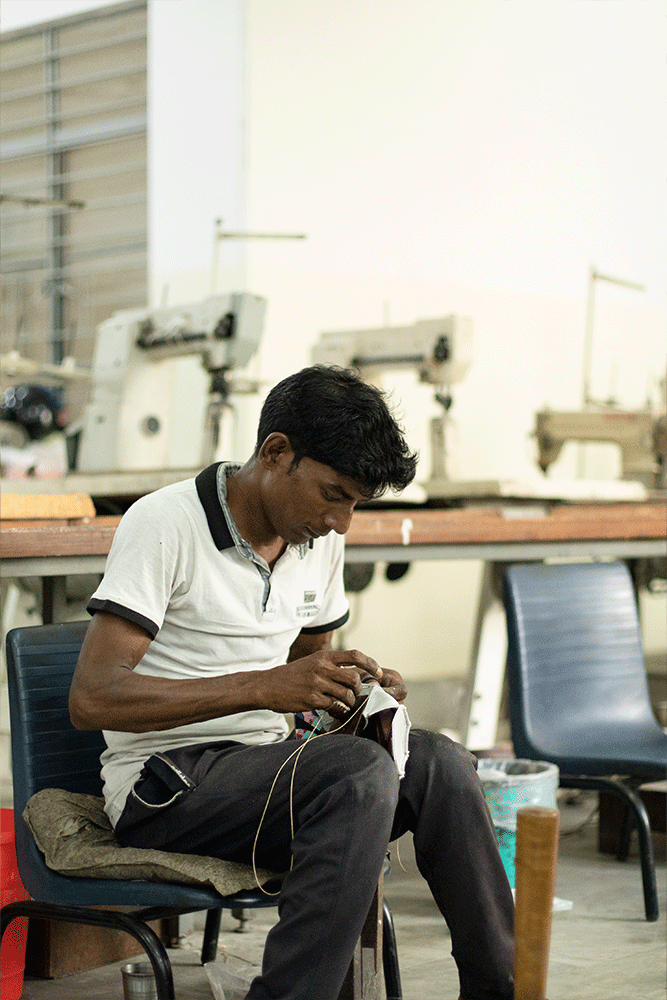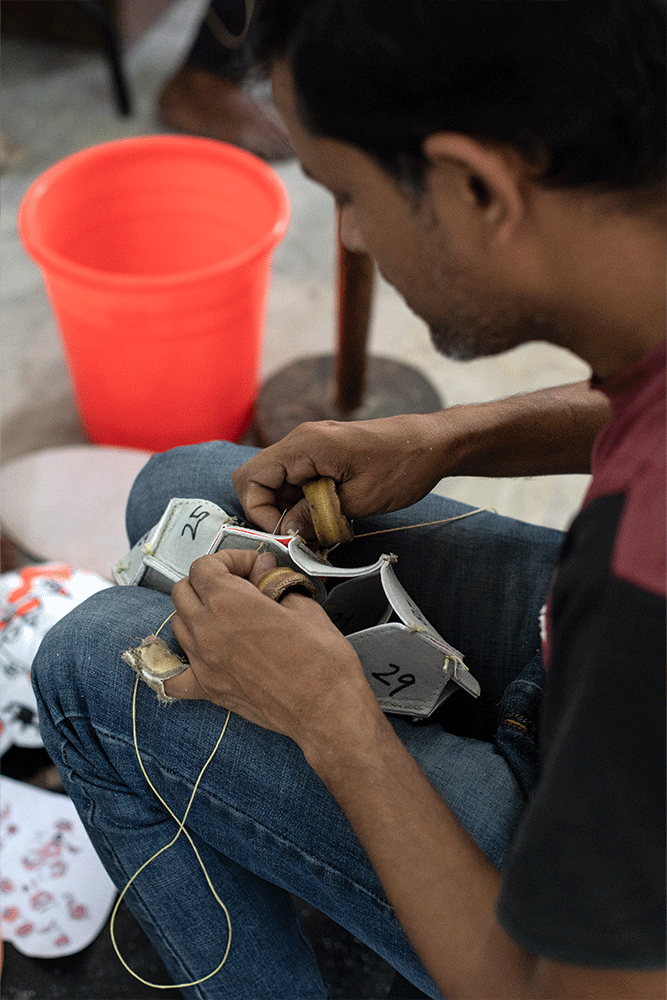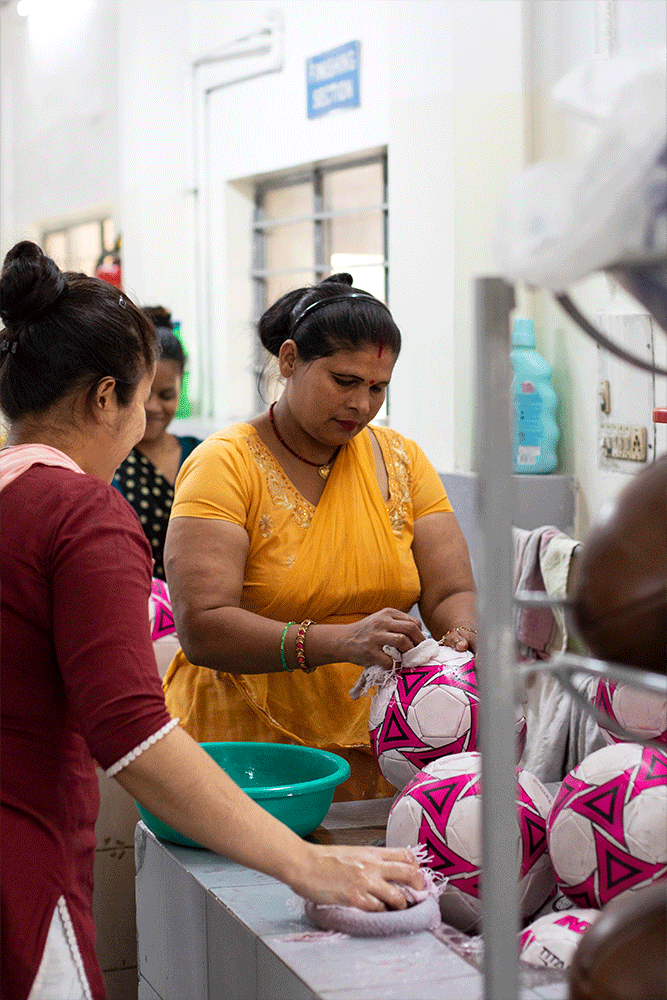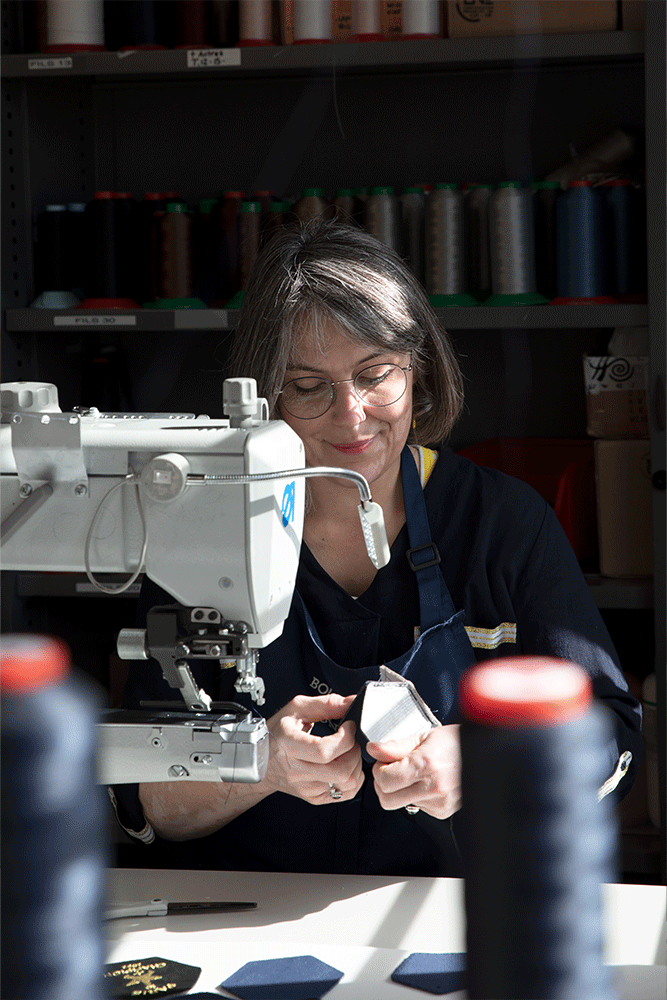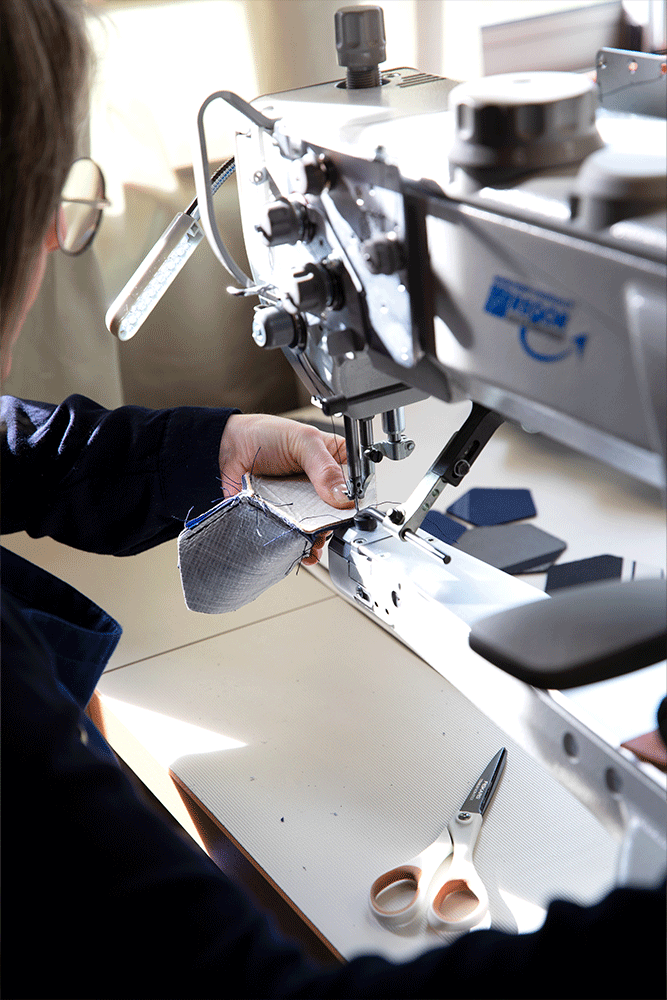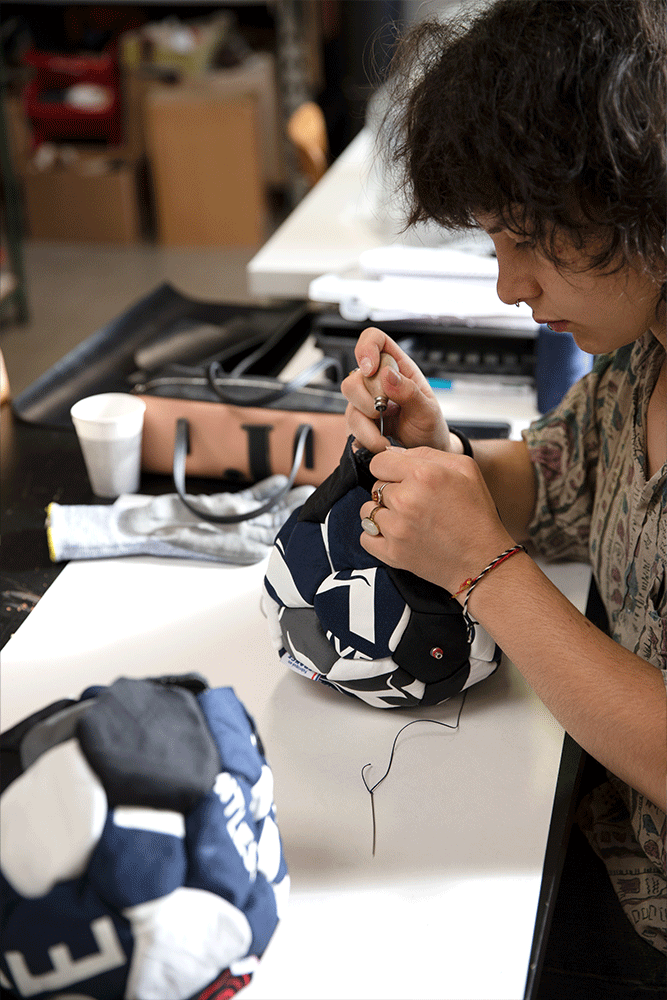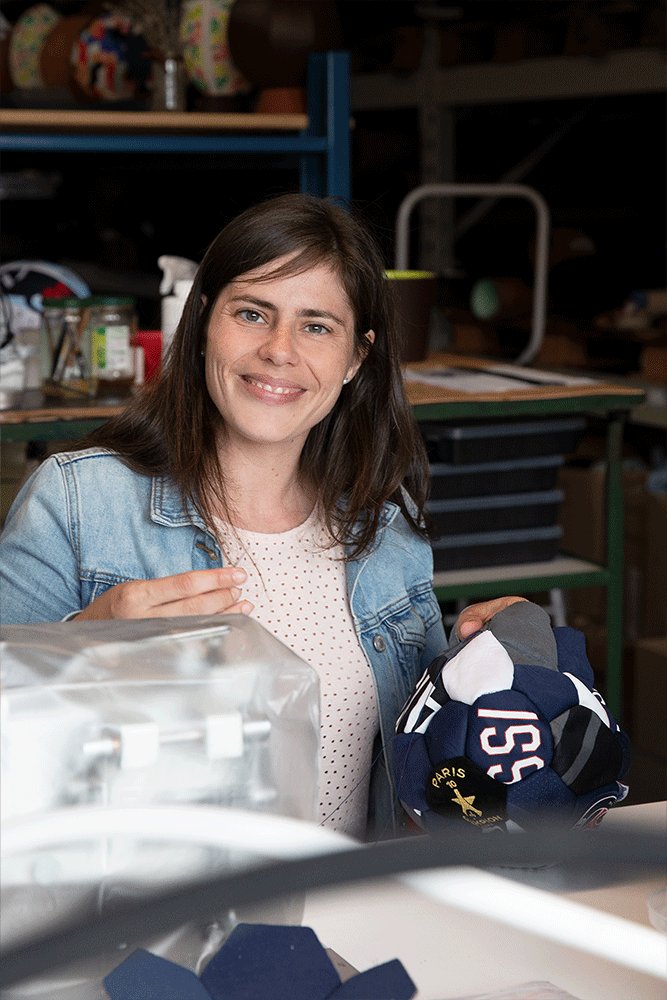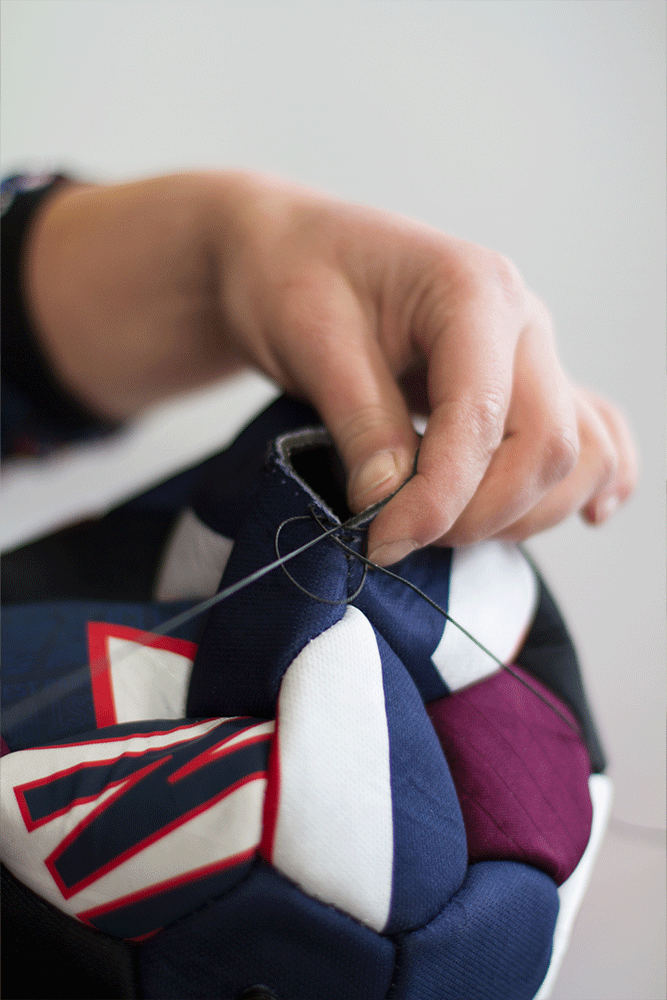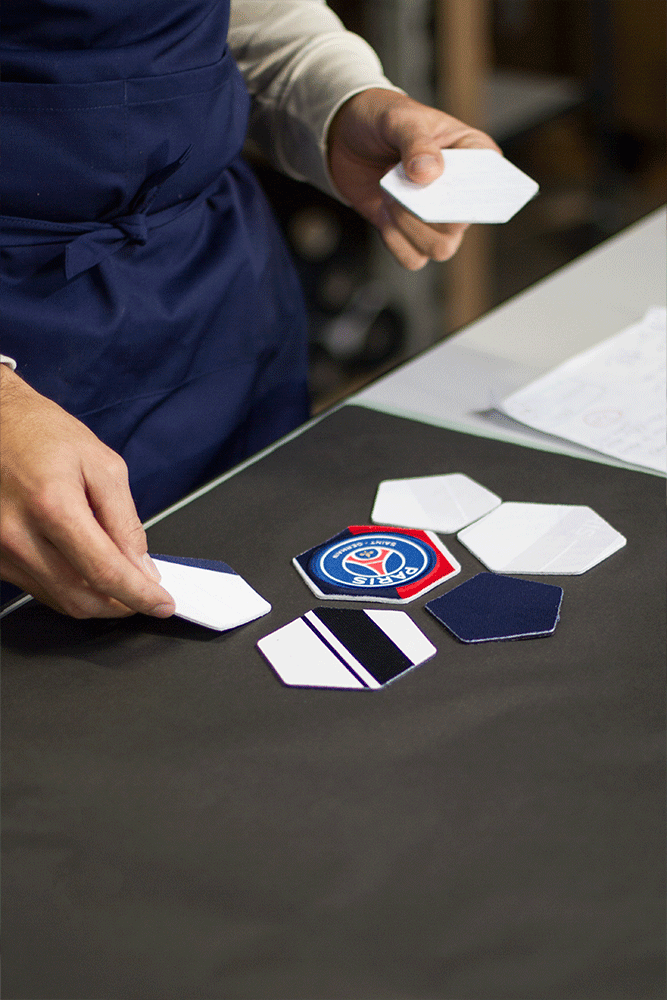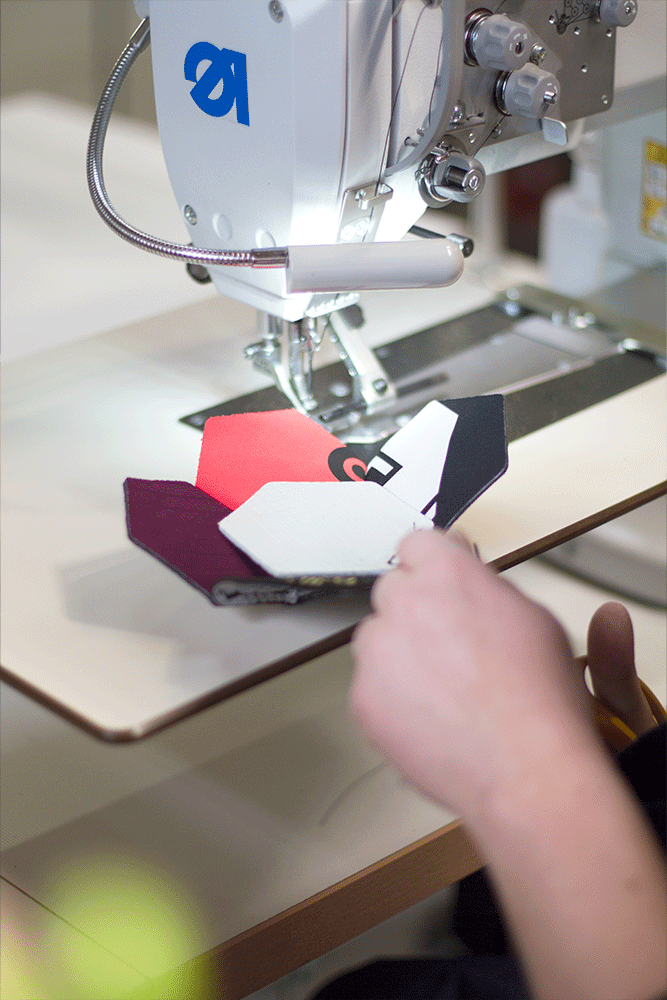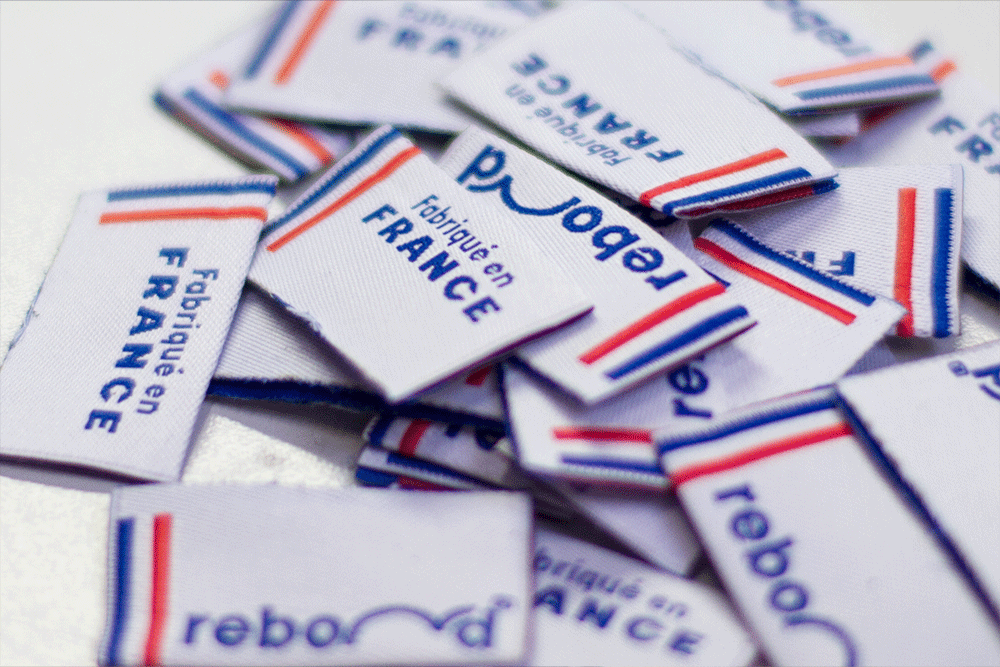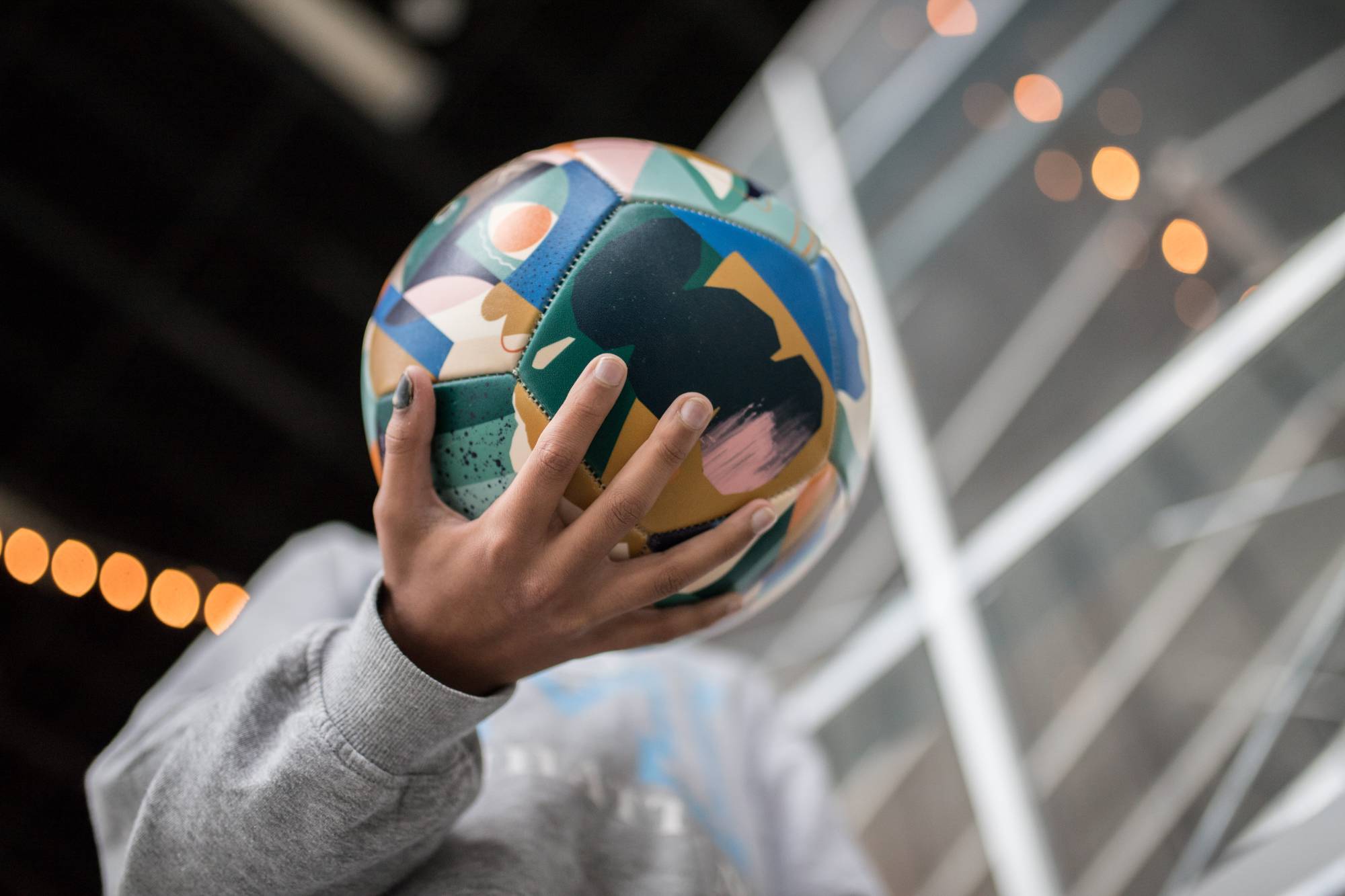Transparency
The essential questions
The balloon industry is facing many challenges. At Rebond, we have asked ourselves the questions that are inseparable from the ecological, human and economic challenges brought about by this production sector.
How are the balloons made? Where are they assembled? What materials are used? How are our employees paid?
To answer these questions, we first looked at the most popular ball of its generation: the soccer ball. Here are our answers to these essential questions, which are the reason for Rebond's existence.
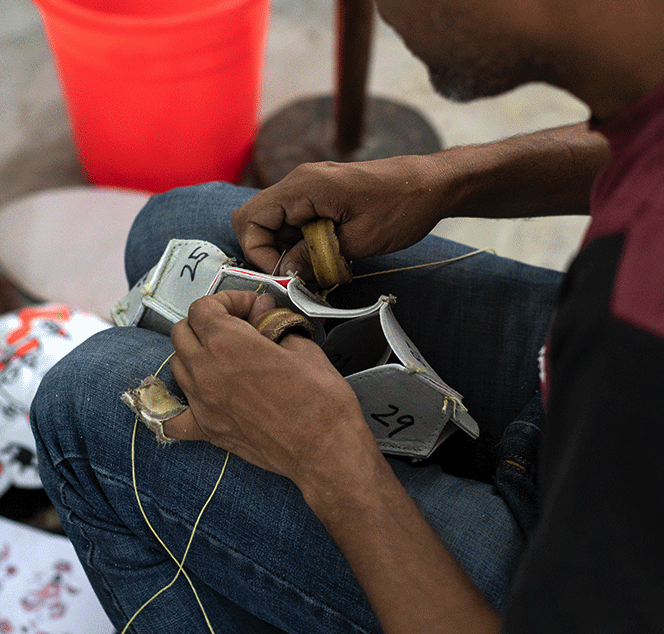
Envelope, materials, components...
Under its 32 hand or machine assembled panels, the classic soccer ball hides several layers of materials: PVC or PU sheet, EVA or PU foam, polyester or cotton canvas, latex, PVC or resin bladder, inks.
- THE OUTER SHELL
The outer shell of a soccer ball is made up of 3 layers of different materials, all of which are essential to its performance on the pitch. As these different materials close the door to recyclability, the ball is a product that ends up being incinerated at the end of its life. In France today, more than one and a half million soccer balls are thrown away every year. At Rebond, it took months of R&D to come up with a complex eco-design assembly that is single-material and capable of achieving the same technical qualities as a competition ball. Single-material design opens the door to product recyclability.
Rebond's main innovation: bio-sourced materials. What we call bio-sourced materials are materials that are no longer derived from fossil fuels, but mainly from residues of organic, vegetable matter. At Rebond, this plant-based complex is made from soybean oil harvested in Ukraine and processed in France, in our Loire-Atlantique region.
In addition to its bio-sourced composition, this new material enables us to produce a single-material envelope, making it possible to recycle the balloon, which was previously impossible.
The outer leaf
This thin layer of flexible, resistant material is the visible part of the ball, on which we print our designs. At Rebond, this envelope is made from bio-sourced PVC or PU, derived from at least 51% renewable organic materials.
> Analysis report on bio-sourced materials
La Mousse
Also made from bio-sourced PVC or PU from our R&D, the foam is the essential element that cushions the ball. It's one and the same with the outer sheet, enabling us to recycle materials.
Interlining
This layer is made either from RPET, i.e. recycled polyester, or from the same base material as the envelope. It reinforces the bond between the materials and facilitates balloon assembly. The interlining is bonded to the foam layer with natural latex, to give it bounce. When using RPET, 10 recycled plastic bottles are needed to create a balloon's interlining sheet.
> Recycled Polyester Analysis Report

THE VESSIE
The last assembly element, the bladder, allows the balloon to be inflated. It gives the outer envelope its perfectly round shape.
Our bladders are made of natural rubber harvested in South India and produced in Jalandhar, just a few steps from our assembly plant. Natural rubber is an elastic substance that comes from latex, the transformation of plant sap. The forests from which we source our products are managed by the state in a sustainable manner under the international PEFC label.
THE INKS
Today, there are no regulations concerning the inks and paints used on balloons sold in France.
At Rebond, we've given the ball a framework by applying European toy and game standards, usingEN71 inks, or vegetable-based inks, which allow the product to be used by a child and are free from hazards in terms of toxicity, migration and flammability.
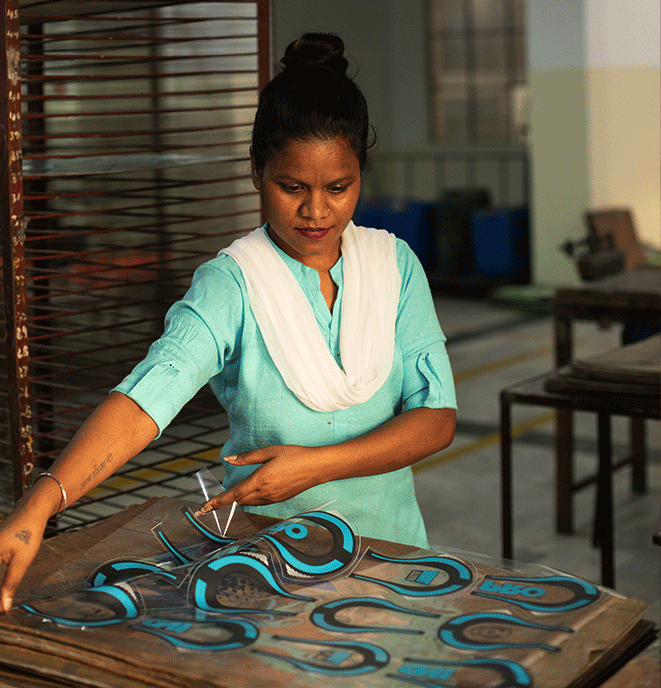
Design, procurement, production...
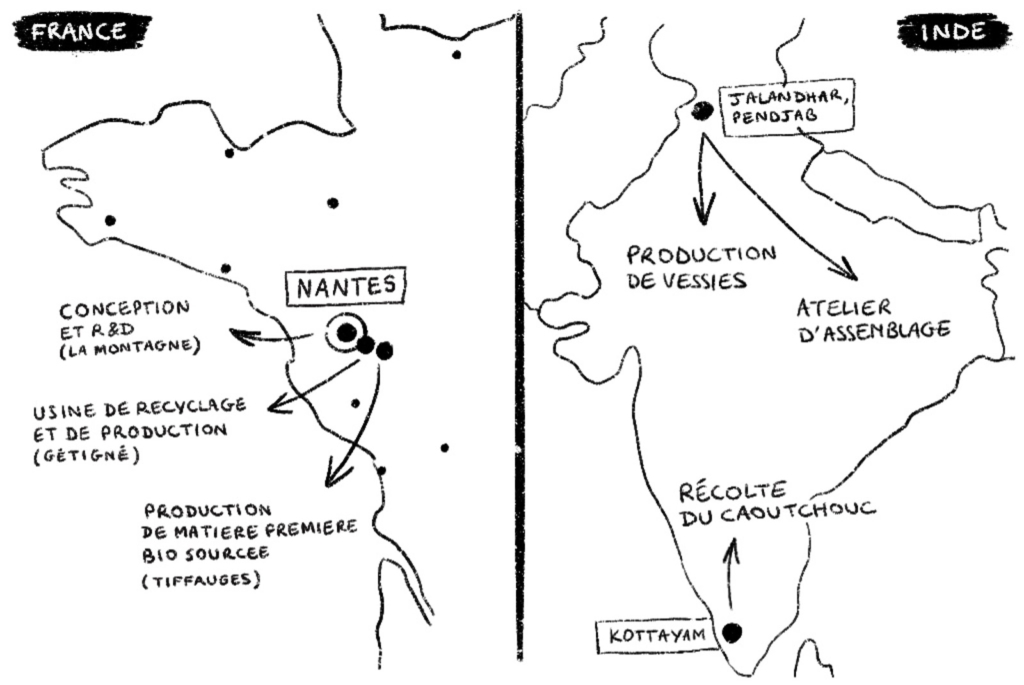
Straddling the border between India and Pakistan, Punjab is the region where the ball was born in the 1930s, during the colonial period.. Although China has taken over part of the market in its recent industrial development, 85% of manual balloon production still originates in Punjab, thanks to its historic know-how.
In order to continue to promote local know-how, we have chosen to strengthen our ties with Punjabi producers. We contribute to the economic development of this specialized region by working under the Fairtrade standard, which allows us to pay our partners fairly and transparently.
Today, Anurag and Anuj - father and son directors of the Punjabi assembly workshop - are an integral part of the Rebond project. As ball experts, they act as true guides and partners in our R&D efforts. Our aim is also to boost CSR awareness in this part of the world.
Alongside our Punjabi workshop, we work with a French production site, located a few kilometers from Nantes. Initially specialists in leather and footwear, they have been able to tame the complex product that is the ball, as it follows the same production stages.
Thanks to Thomas, our production manager, we have developed a balloon-specific assembly workshop at their plant.. Shirt ball, leather ball, game ball... Access to our innovations, combined with the high-end know-how of French couture, has enabled us to reintroduce the Made in France ball, with projects in collaboration with Paris Saint-Germain, Bayern Munich, the FFF... And more to come!
Technical mastery and haute-couture
Rebond has chosen to work in France and in Punjab, to link two cultures with complementary historical know-how. Punjab is the mastery of the ball in all its aspects. France, it is the haute-couture which benefits from a privileged access to R&D resources.
The Made in France balloon wouldn't exist without Punjab, and the eco-designed balloon wouldn't exist without France: we work hand in hand to pull each other up.
Fairtrade, 1% For The Planet, associations...
Talking about ecology is also talking about people. The relationships we have with our partners are essential and play an important role in Rebond's decision making. Suppliers, producers, associations... We treat each employee with great respect and consideration for their work.
Fairtrade
Rebond works with all its partners under the principle of fair trade. Our commercial commitments are based on dialogue, transparency and respect in order to achieve greater equity in our trade.
To this end, Rebond balloons are produced under the Fairtrade standard of the NGO Max Havelaar. The Fairtrade standard ensures that producers receive a fair and stable price, sustainable trade relations and the implementation of measures to protect the environment and employee safety.
Through this commitment, we also pay the Fairtrade Premium to the workers, which ensures them a decent income, higher than the local average wage.

> Read more about our Fairtrade commitment
1% For The Planet
Beyond the ball, we want to make a lasting commitment. To this end, we are linked to the worldwide 1% For The Planet collective to which we donate 1% of our annual turnover to be redistributed to associations, organizations and companies working to preserve the environment.
Today, 1% For The Planet already has 6,000 members in nearly 91 countries, and more than $350 million has been donated to environmental organizations.
Involvement in associations
Behind each project, we wish to highlight and support an association.
Access to housing with the Abbé Pierre Foundation, support for caregivers with the Fondation des Hôpitaux de Paris or pediatric cancer with Run For Hope... We sell our balloons to benefit various causes by working with artists, brands, and committed companies.
Our limits, our hopes, our projects
A balloon made of vegetable matter, that had never existed before.
But how is soy grown? What is the proportion of bio-sourced in the finished product? Is our Fairtrade commitment sufficient?
Many questions remain unanswered. Because the vegetal balloon is not only that. It is also our sustainable commitment and our will to remain transparent towards the product. Aware of the challenges to be taken up in the years to come, here are the questions that trace the road to the balloon of tomorrow.
External surface: By working with bio-sourced materials, we reduce our impact on the planet by saving fossil fuel resources. But bio-based materials have their limits and a product cannot be 100% bio-based. In our case, it is 51%. This is certainly a big step forward, because 51% of fossil energy is "saved" with our balloon. But we must seek to go even further, we are already starting tests to reach more than 80% of bio-sourced on our external surface.
And perhaps the solution will be found elsewhere than in bio-sourced, this step will take us to new horizons, for sure.
Internal surface: Our balloons are made of recycled polyester from plastic bottles. This is the layer that prevents us from having a 100% mono-material product to this day, and that imposes us a separation of materials when we wish to recycle the ball. We are currently working to standardize 100% of the materials used on our balls in order to promote the recycling of our products.
Bladder: This is a product on which we have not focused our R&D. We work with natural materials (rubber, latex) from responsible plantations managed by the Indian government. We still need to go further in this area, by seeking to label the social environment of producers via our partner Fairtrade for example. We are already working on the recycling of these materials but have not internalized it, which has an impact in terms of transport.
Finally, there is a point of vigilance around the processing of these materials by vulcanization; we must ensure that emission limits are respected.
Cotton: In the balloon, there is cotton. It is used for the sewing threads used to assemble the balloon. It is certainly a minimal use compared to other materials, but the cultivation of cotton requires a significant amount of water, and is often the result of intensive cultivation using mechanization. We need to take steps to support our suppliers towards a label (e.g. GOTS) or even consider other less risky textile fibers such as linen or hemp.
Some other issues to address or monitor: We need to keep a close eye on transportation throughout the life cycle of our products, as well as on the control of the end-of-life of the product, by proposing a simple and efficient system for the recovery of used balloons.
We have to listen in general, and to you in particular; we have been accompanied by an external company to analyze the life cycle of our products: EVEA, and try to work every day with common sense, to offer you a product that makes sense.
The exchange of knowledge and sensitivities are for us the keys to a well designed product. Because we are convinced that the answer to the current challenges of our society will be collective.
French company
Secure payment
24h delivery with Chrono - 72h with Colissimo
Customer service - 06 75 42 83 78
